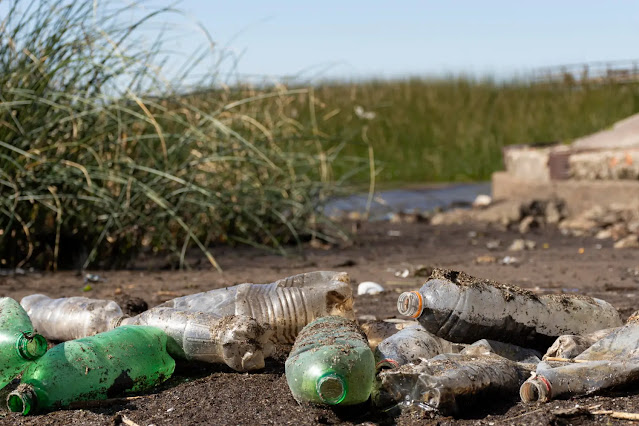Causes of water pollution
A well-known proverb says, "Don't spit in a well, for one day you may drink from it." However, humans still spit in the well they drink from, and water pollution remains one of the most serious environmental threats the world faces today.
we know how scarce fresh water is in the ground and on the surface of the earth, a problem that is increasing rapidly due to climate change, continuous population growth, and urbanization, to the point that prompted the World Health Organization to warn that by 2025, half of the world's population will live in water-stressed areas.
Now, we review together the meaning of water pollution, its main causes and effects on humans, and how it affects various types of water bodies.
What is meant by water pollution?
There is no comprehensive definition of water pollution, but one of the famous definitions considers that polluted water in general is water whose composition has been changed to the extent that it is unsuitable for some or all of its uses. That is, it cannot be drunk or used for essential purposes such as agriculture, or even to support the survival of aquatic ecosystems.
Water pollution occurs when toxic substances seep into water bodies, such as lakes, rivers, and oceans, and dissolve in them in a way that exceeds the ability of water to disintegrate them, which leads to a deterioration in water quality and makes it toxic to both humans and the organisms that live in it.
Major water pollutants include bacteria, viruses, parasites, fertilizers, pesticides, nitrates, phosphates, plastics, waste, and even radioactive materials. In many cases, these pollutants are not visible, meaning they do not always change the color of the water; For this reason, periodic tests are carried out on water samples to assess the water's purity.
Major sources of water pollution
Sometimes pollution may be caused by nature itself, as in the case of volcanic eruptions and algae blooms. However, the main cause in most cases of water pollution is due to human activity.
There are many classifications used to classify water pollutants, and one such division is used by the United Kingdom Environmental Law Association (UKELA), which classifies sources of water pollution resulting from human activity into six main categories:
1- Untreated wastewater:
It includes liquid waste that is discharged from residential, commercial, industrial, and agricultural complexes into waterways without treatment. More than 80% of the world's wastewater goes back into the environment without being treated or reused, and in certain less-developed countries, this percentage is even higher. countries, the figure exceeds 95%, according to United Nations estimates.
2- Agricultural pollutants:
Agricultural processes such as the use of pesticides and fertilizers, the disposal of sheep manure, and the tilling of land can cause water pollution. Many of these substances contain nitrogen and phosphorous, and if transported into lakes and streams through rainwater runoff, they can lead to increased algae growth, water poisoning, and other environmental problems.
3- Oil pollution:
Several notable oil spills occurred in history, the most important of which was the delinquency of the oil tanker "Exxon Valdez" near the coast of Alaska in 1989, which led to the spilling of about 34,000 tons of oil in the Gulf of Alaska. and the oil spill that occurred in the Gulf of Mexico in 2010, which led to the spilling of at least 450,000 tons of oil into the waters of the Gulf, making it the largest accidental oil spill in modern history.
In addition, nearly half a million tons of oil makes its way into marine environments each year from onshore sources such as factories and plantations. The release of these large quantities of oil into the sea waters caused huge losses and greatly destroyed marine life and ecosystems in those areas.
4- Radioactive waste:
Radioactive materials are used in nuclear power plants and other industrial, medical, and scientific processes, and can also be found in illuminated clocks, televisions, and x-ray machines. If these materials are not disposed of properly, radioactive waste causes serious water pollution incidents.
5- Disposal of waste in rivers:
Illegal disposal of industrial and domestic waste is a huge environmental problem, especially in developing and underdeveloped countries. This waste can destroy or degrade important habitats for fish and cause coastal and coastal erosion.
6- Disposal of waste in the seas and oceans:
This waste also kills marine organisms, even large ones. For example, hundreds of sea turtles are killed every year by plastic waste, which mistakenly believe that plastic bags and balloons are jellyfish - their favorite food - and once they are swallowed, the plastic blocks the intestines of the turtles, causing them to die.
Effects of water pollution on humans
From a health point of view, polluted water is linked to the transmission of many serious diseases such as cholera, diarrhea, dysentery, hepatitis A, typhoid, and polio. An Egyptian environmental study, published in the Journal of Advanced Research, indicates that waterborne diseases are responsible for more than two million deaths and four billion cases of diarrhea worldwide annually, making water pollution one of the leading causes of death and disease.
According to the World Health Organization, in 2017 alone, more than 220 million people required preventive treatment for schistosomiasis, an acute and chronic disease caused by parasitic worms transmitted through contaminated water.
In addition to the direct and indirect effects on human health, the effects of water pollution extend to various economic and social aspects. We cannot here mention all of these effects; So we will suffice to point to the World Bank's warning in 2019 that polluted water reduces economic growth by up to a third in some countries.
The bank stated, in a report published on its website, that in this conclusion it relied on compiling the world's largest database on water quality, from field monitoring stations, remote sensing technology, and machine learning. The report also found that as water and soil salinity increase, agricultural yields decrease, and each year the world loses enough food to feed 170 million people.
The damage extends to various bodies of water
Perhaps the most prominent and obvious manifestation of water pollution for most people is river pollution. Many organic compounds from domestic and industrial sewage, and waste from agriculture and animal production, eventually make their way into rivers, even in some developed countries.
Since many of these toxic organic compounds are not biodegradable or decompose slowly, they persist in the ecosystem for long periods and often turn into carcinogens, especially when they interact with chlorine used in water disinfection, and they also affect fish and other aquatic organisms.
Water pollution damage is not limited to surface fresh water only, but pollutants also seep into groundwater, which may reach our homes as polluted water that we use in our daily activities. The American non-profit Natural Resources Defense Council (NRDC) states that nearly 40% of Americans rely on groundwater pumped to the surface of the earth as a source of drinking.
Groundwater pollution in particular raises a complex problem. Due to the difficulty of removing pollutants and the high cost that this requires. Once the aquifer is polluted, it may become unusable for decades or even thousands of years, and it can spread pollution far as it seeps into streams, lakes, and oceans.
The same applies to salty bodies of water. According to a report published by the US National Oceanic and Atmospheric Administration (NOAA) last month, 80% of marine pollution in the oceans comes from land. Sources of this pollution include septic tanks, cars, trucks, boats, and farm waste, which often makes its way into the seas.




Comments
Post a Comment